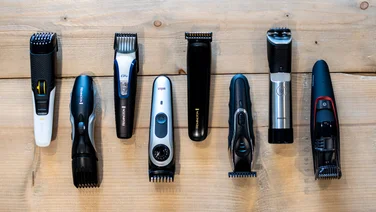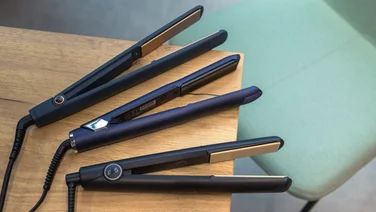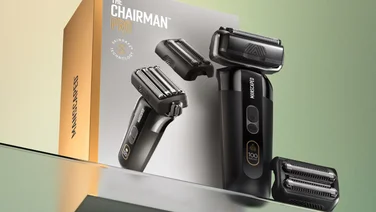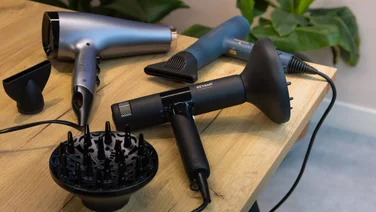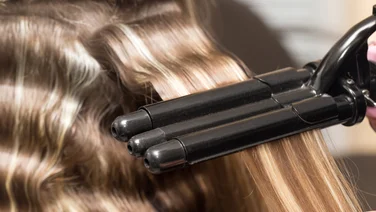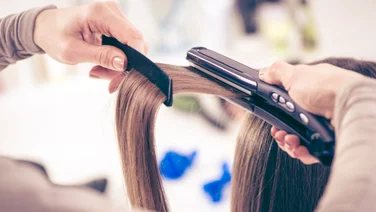To help us provide you with free impartial advice, we may earn a commission if you buy through links on our site. Learn more

At Expert Reviews, we put every hair straightener we review through a series of stringent tests. This helps us to cherry-pick the best hair straighteners from a myriad of luxury, mid-range and budget-friendly options.
When testing hair straighteners, we always pay attention to temperature ranges, heat-up time and the time it takes to achieve a fully styled head of hair. Our review process involves weighing this quantitative data against qualitative test results gathered by our experts; these include build quality, ease of use, and hair shine levels. Below, you’ll find a detailed rundown of our hair straightener testing process.
How we test hair straightener heat-up time
Hair straightener heat-up time will differ depending on the target temperature of the hot plates. For these tests, we set every hair straightener to a standard temperature: 180°C. We use this temperature because it’s the average temperature recommended to style most hair types and textures while minimising heat damage.
We time how long each pair of hair straighteners takes to heat up to 180°C, before recording the data in our database – ready to be compared to every other hair straightener we’ve tested.
Some hair straighteners, such as the GHD Originals, only come with one heat setting. In this case, we’ll still measure the heat-up time but will clearly state the max temperature it reached.
How we test hair straightener design
At Expert Reviews, we know that different people prefer different types of hair straighteners. While some design choices, like colours, will vary depending on personal preference, other design details can help or hinder hair straightener performance.
For example, some hair straighteners are built with a rubbery matte finish which could drag the hair too much to achieve curly styles easily. We measure and evaluate the ease-of-use of each hair straightener with these details in mind.
We make sure to weigh every hair straightener we review, with and without the wire, and measure its cable length. This helps us to determine how comfortable the product will be to use – a short cable and heavy body will be more cumbersome to use than a hair straightener with a lightweight build and a long cable. Better still, hair straighteners that are connected to the wire via swivel attachments make it easier to twist and turn hair straighteners for curls and waves.
Plate size is another important design feature as longer, wider plates allow you to straighten thicker sections of hair at once, and in fewer passes. However, it’s impossible to create curls and waves on hair straighteners with very wide plates. We measure every hair straightener’s plate size to help determine which use case it’s most suitable for – versatility or speed.
We also test the controls: the backbone of any good hair straightener, though they are easy to overlook. Some straighteners use intuitive button controls while others have sleek, integrated touch screens. Each of these options have their pros and cons. For instance, if the manufacturer has neglected to build in a locking system that prevents the settings from being accidentally changed during styling, buttons can be accidentally pressed – potentially increasing (or decreasing) the heat to damaging (or ineffective) levels. Or, to prevent them from being pressed accidentally, touch controls are often located in between the two straightener arms, making them harder to access and read.
The final design element is storage. Even the most durable hair straighteners are susceptible to damage if they don’t have a storage case or a way to lock the two plates in a closed position for storage. There are many ways to achieve this, so a lack of consideration for storage indicates a poorer design quality in our tests.
How we test hair straightener useability
While hair dryer design can impact useability, no test can give you as much information about a product as simply using it can. In our hair straightener tests, we always use the straightener on freshly washed, dry hair. Before styling, the only product we’ll apply is a basic heat protection spray to protect the hair from heat damage – no hold-boosting products are used, to ensure consistency in our test results. As with our previous tests, the hair straightener will always be set to 180°C.
For every hair straightener we review, we’ll test how easy it is to create pin-straight styles, curls and waves. During styling, we note down if the straightener snags or pulls on the hair at all, or if it requires multiple passes to achieve a smooth finish, especially on textured hair types. We also check how comfortable the straightener is to hold for long periods of time as well as how well the heated plates are able to grip onto the hair. Floating plates typically help with this but some straighteners are more effective than others
How we test hair straightener results
Since we’ve used a consistent styling temperature and no hold-boosting styling products like mousse or hairspray, it’s easy to compare the styling results for each hair straightener. Immediately after use, we note if the hair appears shinier or feels softer and smoother after use. Of course, any burning smells or dry-feeling hair after styling is a big red flag too.
After the initial styling tests, we monitor the hair over the course of a few days to see how well each style lasts. For example, if we’ve curled the hair, we note whether the curls drop faster than usual or have brilliant staying power. Similarly, we’ll note how frizzy straighter styles become over the course of a few days. These all come with the caveat that if the hair has been rained on or the testing conditions are particularly humid, we repeat the tests. This gives us a good idea of how effective the hair styler is, compared to its competition.

